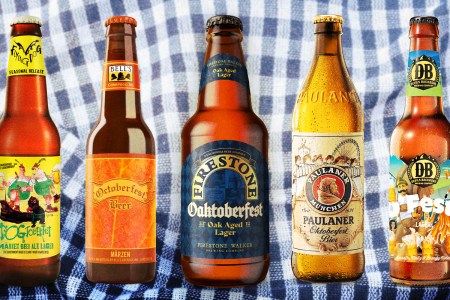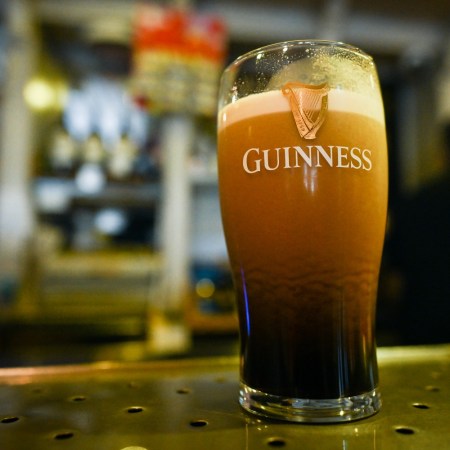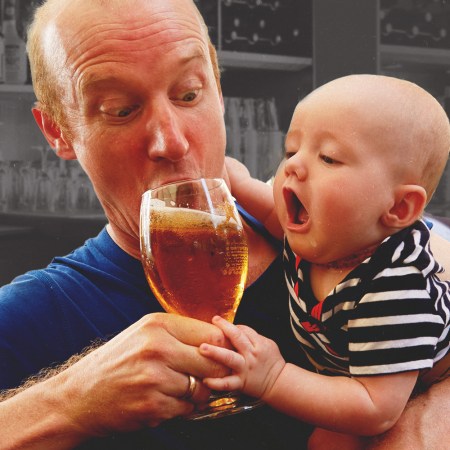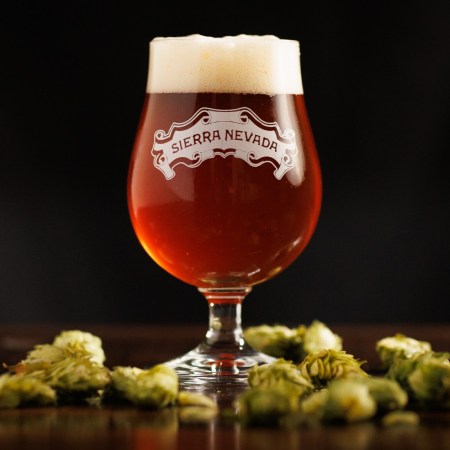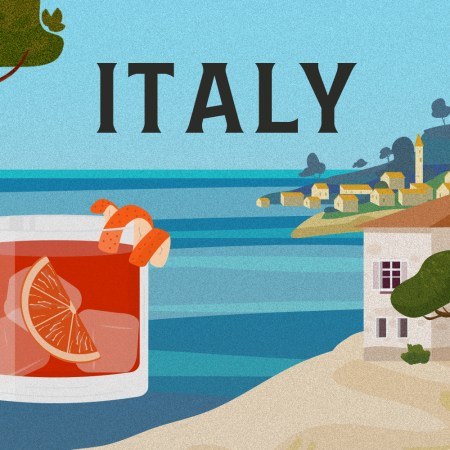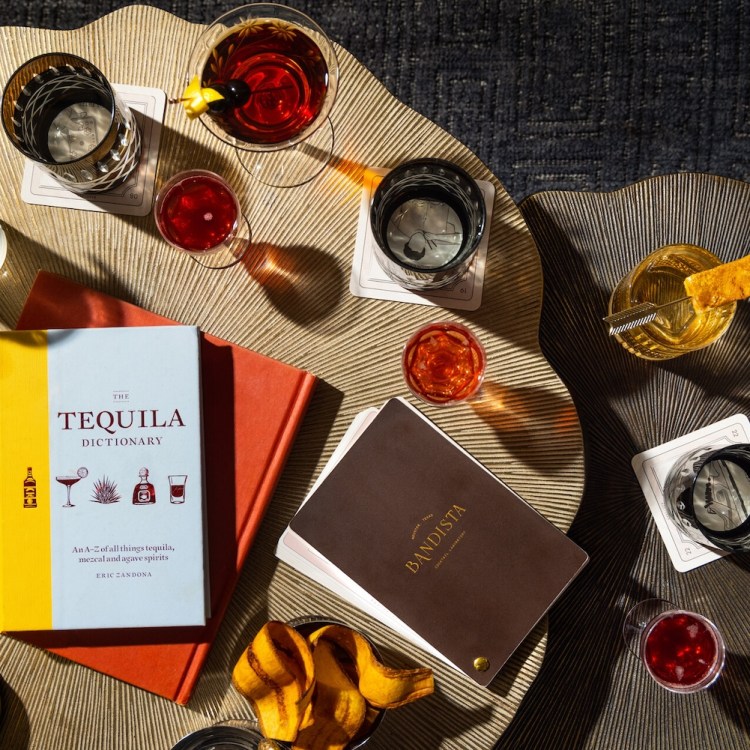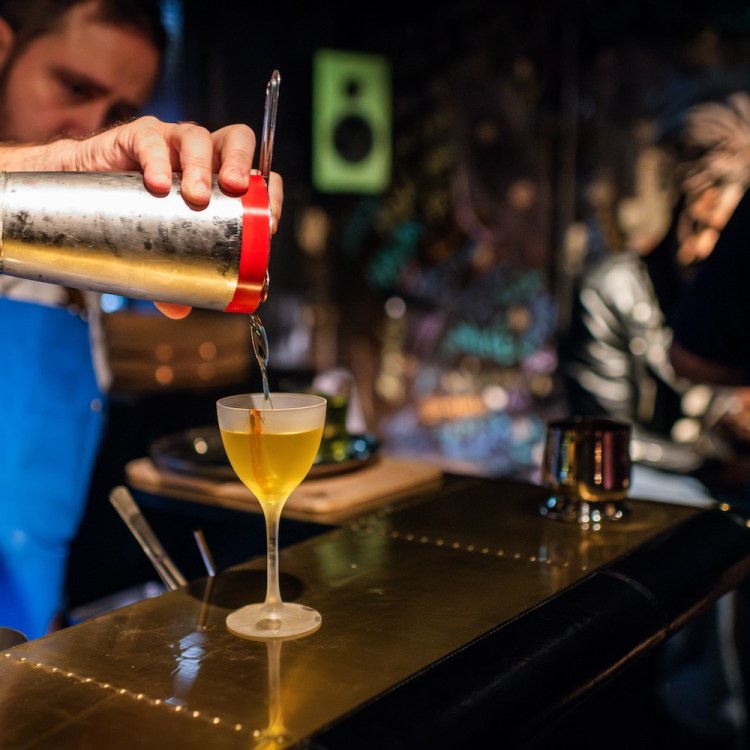Every year as the seasons start to change, beer sellers swap easy drinking summer slammers for fall seasonals. Pumpkin beer, of course, gets most of the attention (and seems to come earlier every year). But Oktoberfest-style beers reign when it comes to a fall seasonal that beer drinkers want to reach for throughout the day and into the night. That said, landing on a universal definition of what exactly defines the style is much harder than picking up a bottle with Oktoberfest on the label.
Only six breweries are allowed to sell their beer at the Munich Oktoberfest that gave the beer style its name: Augustiner, Hofbräu, Paulaner, Hacker-Pschorr, Spaten and Lowenbrau. In the United States, typical Oktoberfest beers are most similar to a Märzen, which is an amber lager that’s brewed in spring and aged until fall. These use caramel malts that lead to beers on the sweeter, more full-bodied side of lager styles. It’s also the style that was served in Munich up until the 1970s.
“In some ways, I think people like to harken back to old world origins when it comes to long-standing holidays like Oktoberfest, so reaching for a beer like a Märzen might feel nostalgic for the occasion,” says James Conery, innovation brewmaster at Sierra Nevada Brewing’s Chico, California, location. “In reality, while today’s Oktoberfest celebrations in Munich continue to be steeped in tradition and nostalgia, the typical beer style served there has evolved to be more quaffable, lighter in color and have a crisp and balanced flavor profile with lighter biscuity maltiness.”
Munich’s Oktoberfest beers have changed more than once over the centuries. The first Oktoberfest beers were closer to a Dunkel, which is a dark lager. In the 1870s, paler malts became more common, and the Märzen was most typical. A century later, it lightened even more to the golden Festbiers served at the festival today. Officially speaking, there is actually a very limited number of true Oktoberfest beers, despite what store shelves may lead on. In the European Union, “Oktoberfestbier” has protected geographical indication status earned in 2022 that specifies a narrow range of original gravity, color, bitterness and alcohol content. Additionally, only Munich breweries can market as an “Oktoberfestbier.”
The regulations keep true Oktoberfestbiers consistent. It frankly makes the idea of beers from elsewhere that are marketed as “Oktoberfest” little more than an afterthought in Germany. When asked via email about American Oktoberfest-style beers, a representative from Hofbräu responded, “We don’t know any American Oktoberfest-style beers, so we can’t really rate them here.”
The story of Oktoberfest beer starts with the eponymous festival in Munich. Crown Prince Ludwig married Princess Therese of Saxe-Hildburghausen in October of 1810 and held a five-day wedding celebration in the city center. It turned into an all-out folk festival complete with horse races, performances and plenty of food and drink. The party was popular enough to throw an encore the following year. Rather than celebrating a wedding, it celebrated Bavarian agriculture and culture. It’s been held every year since (with the exception of war years, cholera outbreaks and the COVID-19 pandemic). Since the festival started tracking attendance in 1980, between five and seven million people have attended the festival each year, according to Oktoberfest organizers.
Beer isn’t the only tenet of Oktoberfest, though it does hold the largest space in the wider public’s imagination. At the festival, only beers that comply with the Münchner Reinheitsgebot (Munich Purity Law) of 1487 and the Deutsches Reinheitsgebot (Germany Purity Law) of 1906 can be served by the six traditional breweries, which we explain below:
Augustiner
This brewery was founded in 1328 by monks of the Augustiner Order and is the oldest Munich brewery still in operation. Its Festbier is 6.2% ABV, and Augustiner is the only brewery to still use hirschen, traditional 200-liter wooden barrels, to age and store the beer.
Hacker-Pschorr
Joseph Pschorr and Maria Theresia Hacker are responsible for turning this brewery into Munich’s leading beer maker in the 18th century, though it was split into two breweries by their sons. Hacker-Pschorr reunited in 1972, and its beer is now made at the Paulaner Brewery, including the 6% ABV Festbier.
Hofbräu
Wilhelm V is responsible for bringing Hofbräu to the world in 1589, when it was ducal, or owned by a duke. It became a royal brewery at the start of the Kingdom of Bavaria in 1806 and then turned into a state-owned business in 1939. The modern Hofbräu Oktoberfestbier is a full-bodied golden beer with a light hop bitterness that clocks in at 6.3% ABV.
Löwenbräu
Löwenbräu (which translates to “lion’s brew”) has a bit of a winding history. By some accounts, the brewery started in the late 14th century, but, officially, a brewery under the name Löwenbräu wasn’t listed in the Munich brewing index until 1746. Even that latest date makes it older than the United States. It became the largest brewery in Munich for a time in the 1800s and changed hands a number of times during the course of the ensuing centuries, with InBev purchasing Spaten-Franziskaner-Löwenbräu in 2003. Löwenbräu is a fixture at the festival with a giant lion that drinks beer and roars the company name to bring people in for a liter of the 6.1% Oktoberfestbier.
Paulaner
Labeled as the youngest of the official Oktoberfest breweries, Paulaner was started by monks of the Paulaner Order in 1634. It was originally reserved for the monks other than during festivals. These days, it’s one of the more recognizable names in German beer that’s imported to the United States. Paulaner has brewed an Oktoberfest beer since 1818, and the modern iteration is a 6% ABV golden lager made with a mix of light pilsner malt and darker Munich malt.
Spaten
Spaten was founded in 1397 and was the first to make a light Münchner Hell in 1894. It was purchased by InBev in 2003. The mayor of Munich kicks off Oktoberfest with the first tap in a Spaten festival tent every year, starting the flow of the 5.9% ABV beer and all the other Oktoberfestbiers after.
We Tasted and Ranked 17 of the Best Oktoberfest Beers
From malty Märzens to lighter festbiers, we tried every Oktoberfest we could get our hands onAmerican Oktoberfest-Style Beers to Drink This Year
America is younger than the youngest brewery allowed to serve at the Munich festival, but that doesn’t mean it lacks a history with Oktoberfest styles. “Whether they are Oktoberfest Märzens or modern Festbier, any beer associated with Oktoberfest is part of the lineage of one of the most popular seasonal beers we have in the United States,” says Jason Oliver, founding brewmaster at Devils Backbone Brewing Company.
A typical American Oktoberfest beer will often be closer to a Märzen with an amber color versus the golden of modern Festbiers (with a few exceptions). “While there are no legal labeling requirements for a beer to be called an Oktoberfest, there are certain expectations from beer drinkers,” says Nick Weiland, brand director at Shiner. “Firstly, they are looking for something that is a special release only available for a limited time. Secondly, beer-drinkers are expecting an Oktoberfest to be a flavorful but easily-drinkable lager-style brew. While Märzens are most common, these beers can range from lighter Helles or Dortmunder styles to darker Dunkel styles.”
It’s hard to say exactly why the Märzen-style beers came to represent Oktoberfest in the United States instead of the current festbiers. Oliver suggests one reason may be military members in the post-World War II and Cold War era who brought the idea back, or that Märzens were exported to the United States as Oktoberfest beer and the notion stuck.
“When a beer like Oktoberfest is established in another country, the initial attributes are the reference point,” Oliver says. “We were first exposed to Märzen-type Oktoberfest beer, and that’s where our association is based from.”
According to Oliver, Oktoberfest beer sales are higher and more sustained than pumpkin or other fall seasonals, and they’re somewhat insulated from trends in craft beer. It’s a common refrain when speaking with American brewers. At Shiner, Oktoberfest leads seasonal beers sold on draft, and Sam Adams Octoberfest is the brewery’s best-selling fall seasonal.
“Seeing how we now have both amber Oktoberfest beer and golden Festbier being brewed in the U.S., the only real tie-in is that they are sold around ‘Oktoberfest Season,’” Oliver says, adding that breweries make Märzens, Vienna lagers and amber lagers year-round. “I think what sets them up for success during Oktoberfest season is the name recognition, the perfect matching of beer to season and, whether authentic or not, the sensation of a cultural tie in.”
In short, there’s a diversity of options to choose from. Some U.S. breweries go the classic route close to a German Oktoberfestbier. Others deviate, like Our Mutual Friend Brewing Company in Denver, which adds a local twist by using 100% Colorado malt from Troubadour Malting in Fort Collins and hops from Colorado Hop Company in Loveland.
Despite the name, these beers aren’t hitting shelves in October — Munich’s Oktoberfest is in September, after all. The beers start to hit shelves in August in the United States, in time for when grocery stores rearrange seasonal display sections from summer to fall offerings, explains Sierra Nevada’s vice president of marketing Lesley Albright. By the end of October, they’ll be gone, so get them while you can. Here are a few more of our favorites:
Devils Backbone switched from making a Märzen-style Oktoberfest beer to a golden festbier called O’Fest a few years ago to differentiate from the brewery’s amber-hued Vienna Lager (though they still make a Märzen-style Oktoberfest beer called 1872 Steinlifter that’s on tap at the brewpub). The golden colored beer uses, in part, a light Munich malt and traditional German hops like Hallertau and Tettnang.
Sierra Nevada keeps things fresh by changing its Oktoberfest release each year, including collaborations with German breweries. In 2024, they collaborated with Brauerei Gutmann, a family-owned brewery that is based in Titting, Germany.
“It’s a delicious take on the Festbier style, and there is a direct and authentic Bavarian influence in it through our collaboration efforts with Brauerei Gutmann,” Brian Grossman, chief brewer and second-generation owner at Sierra Nevada Brewing Co., said in a statement. “A lot of effort and meticulous care goes into crafting all our beers, and especially so with Oktoberfest because of the collaboration process, and the back-and-forth discussion of the recipe and brewing techniques. At the core we’re brewers, we love brewing beer and doing it with precision and authenticity. It’s even more fun when we get to do it with friends who share our passion for great beer.”
“Our brewery was founded by German immigrants living in Shiner, Texas, so German-style beer is in our DNA,” Weiland says. “At Shiner, we’ve zeroed in on the Märzen style as both a nod to the classic Oktoberfest and our historic roots. Believe it or not, Shiner has been using water from the same artesian well since our brewery was founded in 1909. This limestone water from deep in the aquifer beneath our brewery is similar to what is used in Munich and is a perfect match for malty, amber lagers like a Märzen.”
Shiner’s Märzen has racked up the awards — it’s a five-time medal winner in the style on three continents and received gold at the Great American Beer Festival.
Samuel Adams was an early U.S. producer of the style when it debuted its OctoberFest Märzen-style beer in 1989, and it remains the top selling seasonal fall beer across all brands, according to a brand representative. It’s the oldest seasonal beer in the Sam Adams rotation with a classic creamy and malty sweet flavor profile. Founder Jim Koch hand selects the hops in Bavaria each year for OctoberFest and Boston Lager.
Join America's Fastest Growing Spirits Newsletter THE SPILL. Unlock all the reviews, recipes and revelry — and get 15% off award-winning La Tierra de Acre Mezcal.

